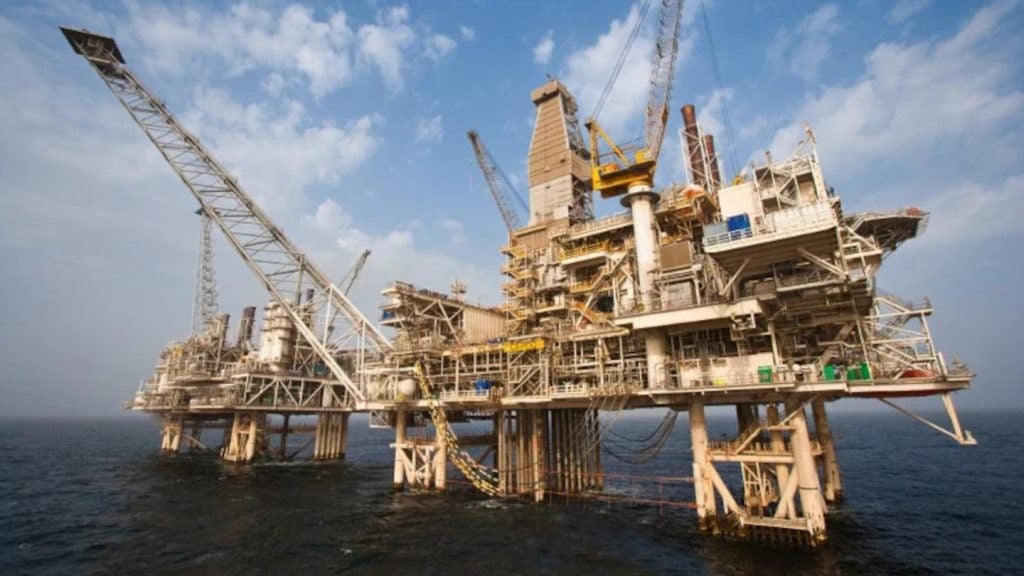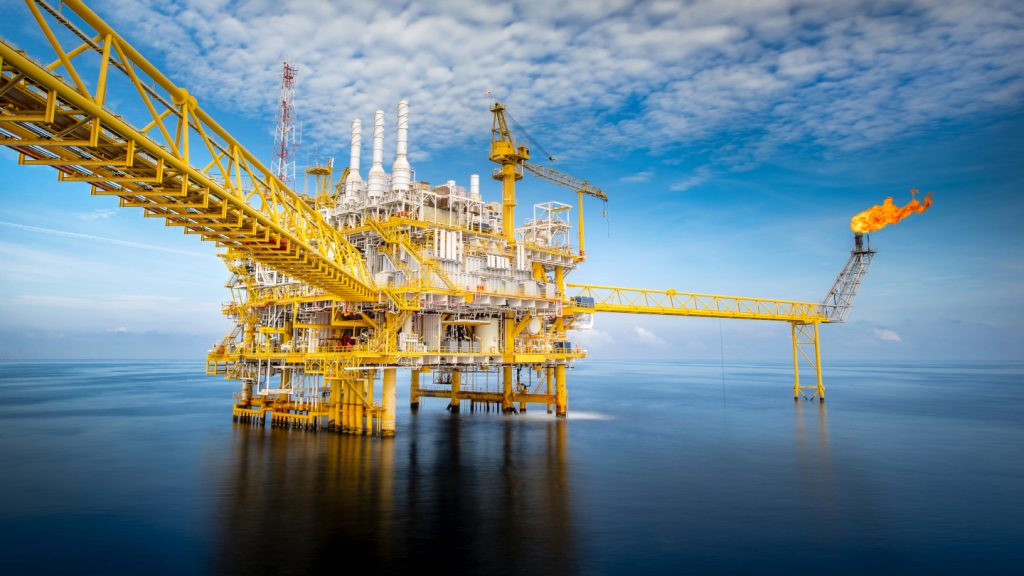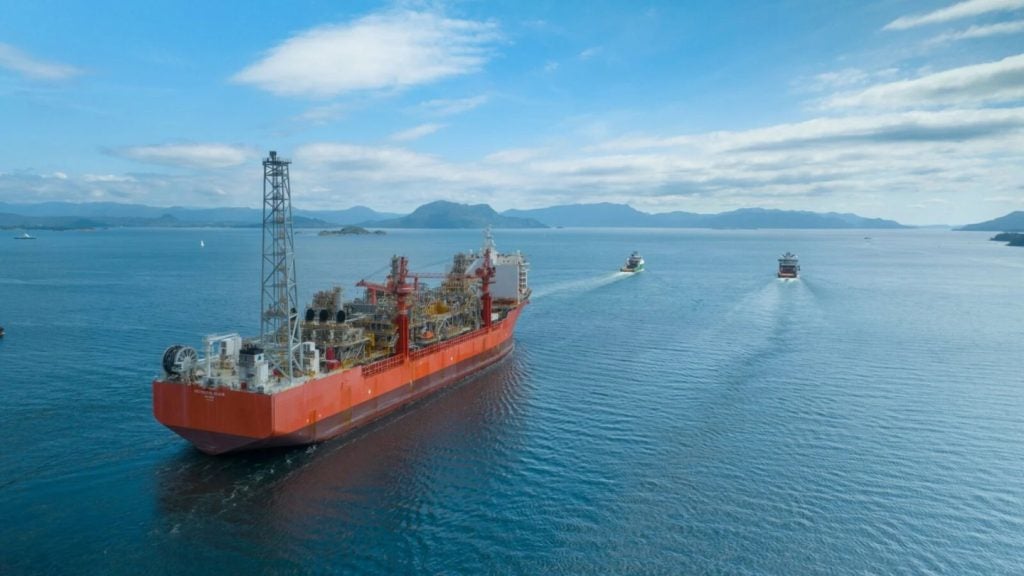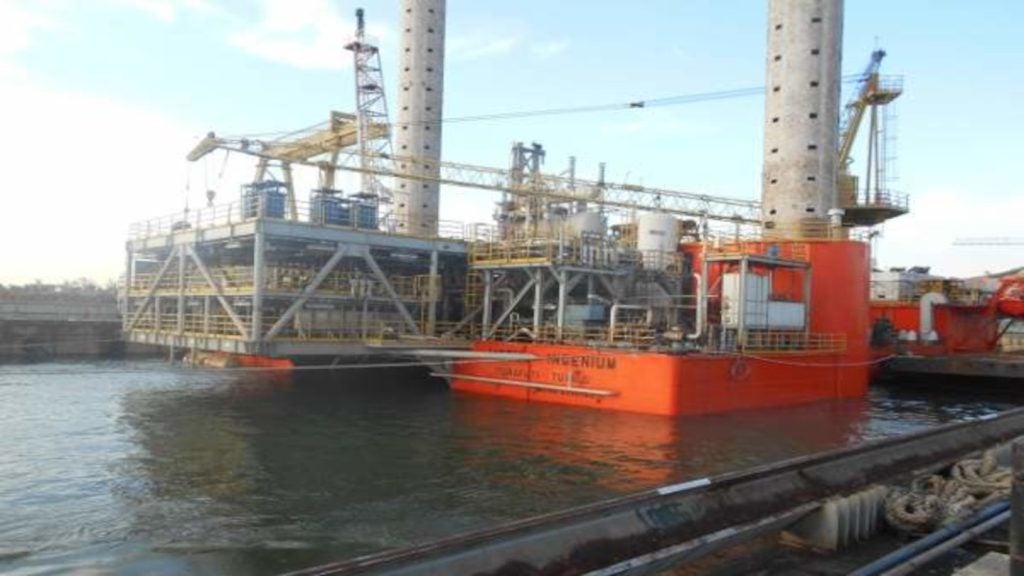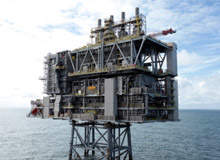

Clair – 8bn barrels
Clair oil field, the biggest oil field in the North Sea and Europe, is also the biggest hydrocarbon resource being developed on the UK Continental Shelf (UKCS). Lying in 150m of water, approximately 75km west of the Shetland Islands, the field was discovered in 1977 and started producing oil in 2005.
The field comprises four licenses P165, P168, P169 and P170 and spans over six blocks. The first phase of its multi-phased development targeted 300m barrels of recoverable reserves through a fixed platform. Clair Ridge, the second phase of the field’s development, is expected to come online in 2016.
BP is the field operator with 28.6% interest in the development, while the other partners are Shell (27.9%), ConocoPhillips (24%) and Chevron (19.4%).
Statfjord– 4.2bn barrels
Statfjord, one of the North Sea’s oldest oil fields, was discovered in 1974 by Mobil Exploration Norway and started producing in 1979 but was sold to Statoil in 1987. The field extends across the UK-Norwegian boundary in the North Sea with 85.47% lying in Norway and the remaining inthe UK.
The field recorded its highest production on a single day on 16 January 1987 by producing 850,204 barrels of oil, while the current production stands at 80,000 barrels of oil equivalent per day (boe/d).
How well do you really know your competitors?
Access the most comprehensive Company Profiles on the market, powered by GlobalData. Save hours of research. Gain competitive edge.

Thank you!
Your download email will arrive shortly
Not ready to buy yet? Download a free sample
We are confident about the unique quality of our Company Profiles. However, we want you to make the most beneficial decision for your business, so we offer a free sample that you can download by submitting the below form
By GlobalDataA life extension project has increased the life of the field up to 2020 and changed its status from an oil field to a gas-producing asset. Statoil as the operator holds 44.3% interest in the field, while the other licensees are ExxonMobil (21.4%), Centrica Resources (14.5%) and Centrica Resources Norge (19.8%).

Ekofisk – 3.6bn barrels
Ekofisk, the first producing field in Norway, is located 280km southwest of Stavanger and lies in 70m to 75m of water. It was discovered in 1969 and was immediately identified as a tremendously large oil field. It started production in 1971 from the jack-up platform Gulftide.
The Ekofisk field area is known to hold the largest number of offshore facilities and pipelines in the North Sea and acts as a hub for other fields lying in the Greater Ekofisk Area.
The field is operated by ConocoPhillips, which holds a 35.1% interest while other development partners include Total E & P Norway (39.9%), Eni Norway (12.4%), Statoil (7.6%) and Norwegian state-owned company Petoro (5%).
Forties – 2.5bn barrels
Forties oil field, lying 180km east of Aberdeen in the UK license block 21/10, was discovered in 1970 and started production in 1975. The production rate was 10,000 barrels a day initially and peaked to 500,000 barrels a day in 1979.
The field set a record when it produced its billionth barrel of oil in May 1982 and went on to produce its two billionth barrel of oil in May 1989. Production soon began declining reaching 45,000 barrels a day in 2003 leading to its operator BP selling the iconic field to Apache.
Apache have launched a programme to further recover 800m barrels of oil from the field and extended the field’s life by another 20 years.

Oseberg – 2.4bn barrels
Oseberg, one of the four biggest oil and gas fields on the Norwegian shelf, lies in approximately 100m of water 140km northwest of Bergen. The field was discovered in 1979 and started producing in 1988. Its development plans initially estimated approximately 1bn barrels of oil in reserves, which more than doubled.
The field includes Oseberg West, Oseberg West Flank, Oseberg Delta, Oseberg East and Oseberg South, Tune and Brage. It has the distinction of being the first field on the Norwegian shelf to receive gas from another field for injection and pressure support for increased oil production. Its main reservoir has a record-breaking recovery rate of 69% compared to the rest of the world’s 35%. It was estimated to hold 142.8m barrels of oil in remaining reserves as of December 2012.
Statoil holds 49.3% interest in the field and operates it, while the development partners include Petoro (33.6%), Total E & P Norway (14.7%) and ConocoPhillips (2.4%).
Gullfaks – 2.3bn barrels
Gullfaks, lying in block 34/10 in the northern part of the Norwegian North Sea, was discovered in 1978 and started production in 1986. It was the first field to be awarded an operating license by a purely domestic consortium of three Norwegian companies Statoil, Norsk Hydro and Saga Petroleum (acquired by Norsk Hydro in 1999).
The field has been developed with three large production platforms Gullfaks A, B and C. A production record was set when 605,965 barrels of oil were produced in a single day on 7 October 1994. The field’s recovery rate is estimated to be 59%, while efforts are in progress to increase it to 62%. Peak production was achieved in 2001 at 180,000 barrels a day.
The field is currently owned by Statoil, Norsk Hydro and Petoro and operated by Statoil.

Troll West – 1.6bn barrels
Troll West, a part of the Troll oil field, lies 65km west of Kollsnes near Bergen, in the northern North Sea. Discovered in 1970, Troll West lies in blocks 31/2, 31/3, 31/5 and 31/6 along with Troll East, which is primarily a gas field, and started producing in 1995.
Oil from the thin oil-bearing layers of the Troll West reservoir is produced through Troll B and Troll C platforms. The remaining reserves on the field are estimated at 226.4m barrels of oil. A programme was initiated to improve oil recovery from the field in 2008, which had been on the decline from a 2002 peak of 400,000 barrels a day.
The field is operated by Statoil, which has a 30.58% interest, while the development partners include Petoro (56%), Shell (8.1%), ConocoPhillips (1.62%) and Total (3.69%).
Snorre – 1.57bn barrels
The Snorre oil and gas field located in blocks 34/4 and 34/7 in the Tampen area of the Norwegian North Sea was discovered in 1979 and started production in 1992. The field was estimated to hold 6.6bn sm³ of natural gas and 4.7m tonne (Mt) of natural gas liquids apart from the oil reserves.
Snorre’s remaining reserves are estimated at 403.2m barrels of oil, 0.3bn sm³ of gas and 100,000t of natural gas liquids.
The field was developed through two platforms Snorre A lying to the south and Snorre B lying to the north of the field. It was the first field to be developed by Saga Petroleum as the operator. Statoil currently operates the field holding an interest of 33.3%, the other partners are Petoro (30%), ExxonMobil (17.76%), Idemitsu Petroleum (9.6%), RWE Dea Norway (8.28%) and Core Energy (1.04%).

Johan Sverdrup – 1.56bn barrels
Located approximately 155km west of Stavanger, the Johan Sverdrup field was discovered in 2010. It is expected to start production in late-2019 and has an estimated life of 50 years which should extend the life of Norway’s oil industry by a number of decades.
The estimated gross 1P and 3P reserves of the field are 1.65bn boe and 3.02bn boe respectively. These include oil, gas and natural gas liquids and comprise 95% of oil. The field is anticipated to produce between 550,000boe/d and 650,000boe/d, and represent approximately 25% of all oil and gas production from the region when full field plateau production is achieved.
Development of the field is expected to be carried out in phases and will comprise multiple fixed platform installations. Statoil (40%) holds a majority interest in the field and operates it, while Lundin Norway (22.6%), Petoro (17.36%), Det norske (11.6%) and Maersk Oil (8.44%) hold the remaining interest.
Valhall – 927.1m barrels
Valhall is a huge oil field in the southern part of the Norwegian side of the North Sea, approximately 290km offshore in water depths of 69m. The field was discovered in 1975 and started producing in 1982.
The field holds an estimated 27.5bn sm³ of gas and 5.5Mt of natural gas liquids apart from oil, whereas the remaining reserves are estimated to be 261m barrels of oil, 6.9bn sm³ of gas and 2.2Mt of natural gas liquids.
The field development began in 1977 with initial development comprising three platforms, which has been expanded to a total of eight platforms. BP Norway (35.95%) is the operator, while Hess Norway holds the remaining 64.05%.



